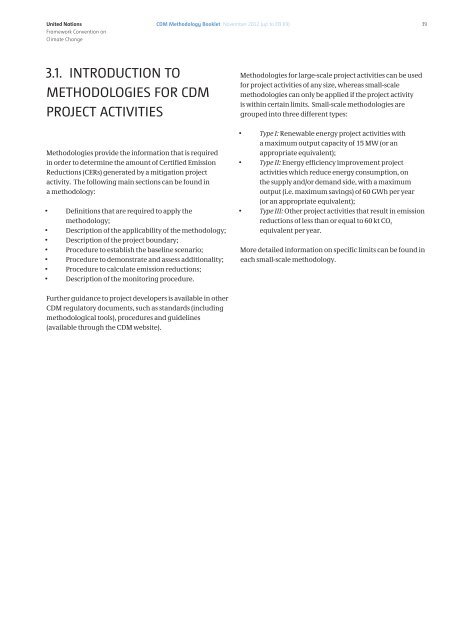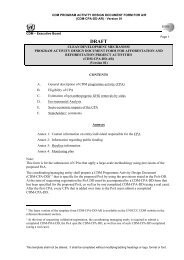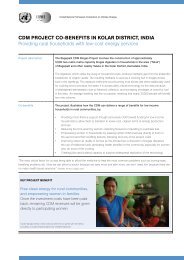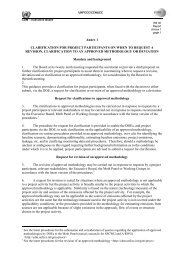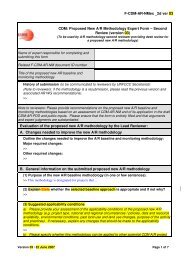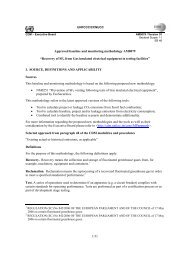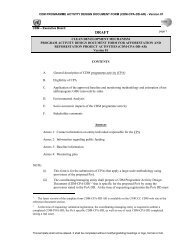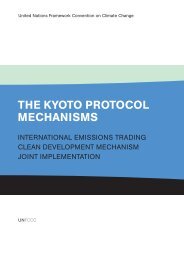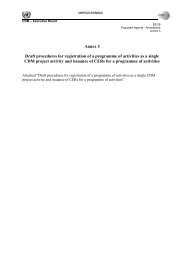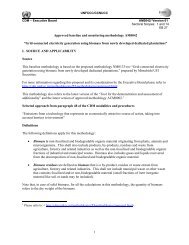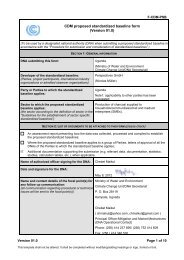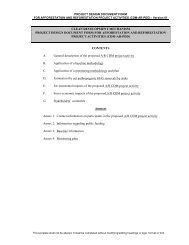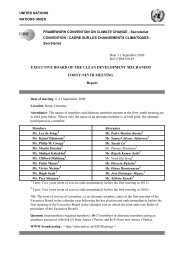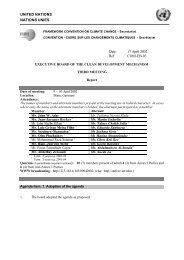CDM Methodology Booklet - CDM - United Nations Framework ...
CDM Methodology Booklet - CDM - United Nations Framework ...
CDM Methodology Booklet - CDM - United Nations Framework ...
You also want an ePaper? Increase the reach of your titles
YUMPU automatically turns print PDFs into web optimized ePapers that Google loves.
<strong>United</strong> <strong>Nations</strong><br />
<strong>Framework</strong> Convention on<br />
Climate Change<br />
3.1. INTRODUCTION TO<br />
METHODOLOGIES FOR <strong>CDM</strong><br />
PROJECT ACTIVITIES<br />
Methodologies provide the information that is required<br />
in order to determine the amount of Certified Emission<br />
Reductions (CERs) generated by a mitigation project<br />
activity. The following main sections can be found in<br />
a methodology:<br />
<strong>CDM</strong> <strong>Methodology</strong> <strong>Booklet</strong> November 2012 (up to EB 69)<br />
• Definitions that are required to apply the<br />
methodology;<br />
• Description of the applicability of the methodology;<br />
• Description of the project boundary;<br />
• Procedure to establish the baseline scenario;<br />
• Procedure to demonstrate and assess additionality;<br />
• Procedure to calculate emission reductions;<br />
• Description of the monitoring procedure.<br />
Further guidance to project developers is available in other<br />
<strong>CDM</strong> regulatory documents, such as standards (including<br />
methodological tools), procedures and guidelines<br />
(available through the <strong>CDM</strong> website).<br />
Methodologies for large-scale project activities can be used<br />
for project activities of any size, whereas small-scale<br />
methodologies can only be applied if the project activity<br />
is within certain limits. Small-scale methodologies are<br />
grouped into three different types:<br />
• Type I: Renewable energy project activities with<br />
a maximum output capacity of 15 MW (or an<br />
appropriate equivalent);<br />
• Type II: Energy efficiency improvement project<br />
activities which reduce energy consumption, on<br />
the supply and/or demand side, with a maximum<br />
output (i.e. maximum savings) of 60 GWh per year<br />
(or an appropriate equivalent);<br />
• Type III: Other project activities that result in emission<br />
reductions of less than or equal to 60 kt CO 2<br />
equivalent per year.<br />
More detailed information on specific limits can be found in<br />
each small-scale methodology.<br />
39


